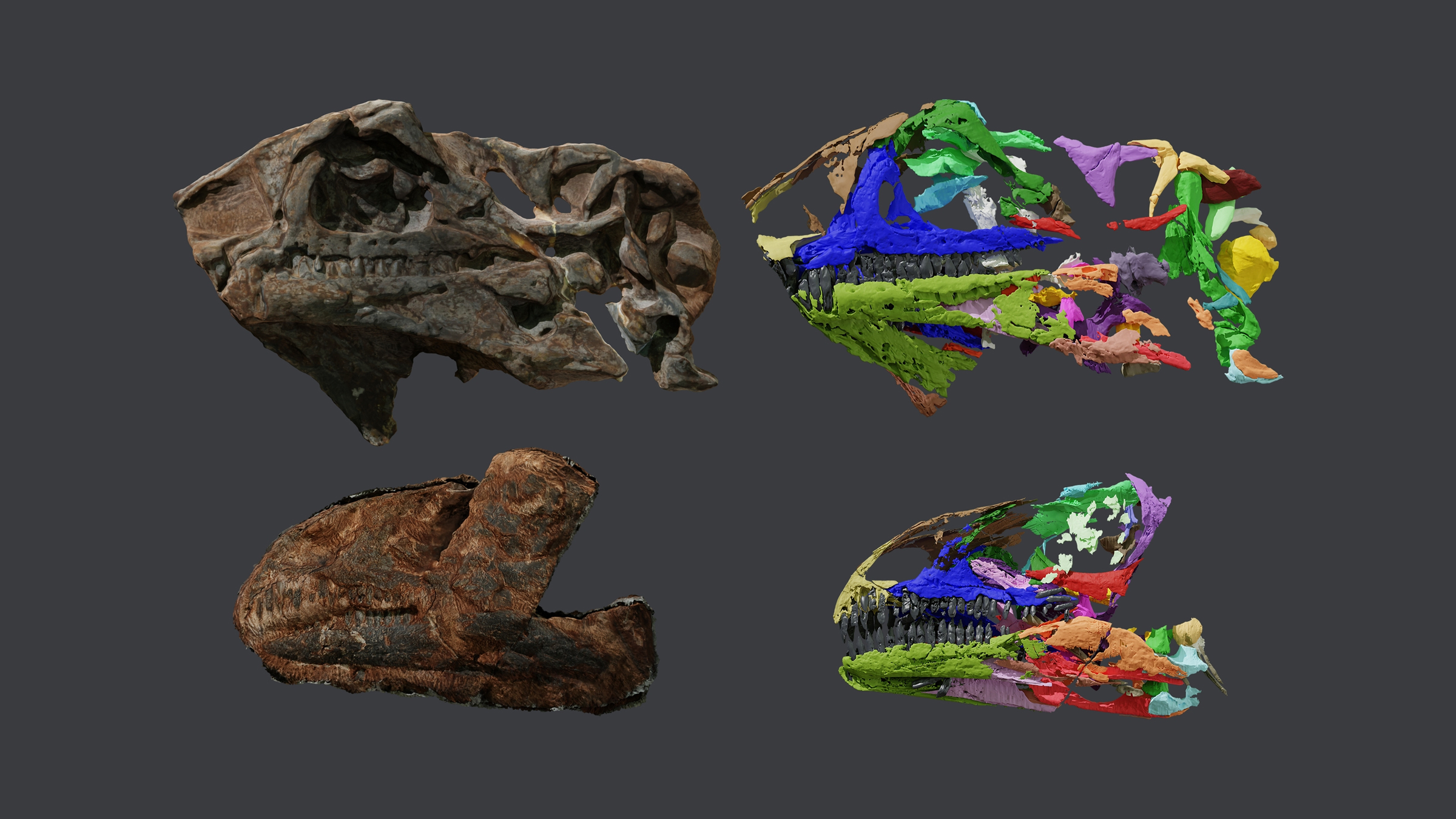Triassic skulls unearthed in Greenland reveal 'cold bone' dinosaur
It was the first long-necked dinosaur in northernmost Laurasia.

A huge dinosaur that roamed Greenland 214 million years ago is a new species, making it the first of its kind to reach such high northern latitudes on the now partially-frozen island.
The two newly described dinosaur skulls, which were unearthed 27 years ago but misclassified, belong to a new species of two-legged sauropodomorph, a group that includes the predecessors of the largest dinosaurs ever to walk the planet, a new study finds.
Paleontologists named the beast Issi saaneq, which means "cold bone" in Kalaallisut, an Inuit language spoken in Greenland. Cold bone is a "cool" reference to Greenland's current climate, but when I. saaneq was alive during the late Triassic, Greenland was part of the fracturing Pangaea supercontinent, so its home in central East Greenland would have fallen "well inside the humid temperate belt" of the supercontinent, the researchers wrote in the study, published online Nov. 3 in the journal Diversity.
Right around that time, the Atlantic Ocean was forming as Pangaea broke into two supercontinents: Laurasia in the Northern Hemisphere and Gondwana largely in the Southern Hemisphere. Cold bone's unique location in Greenland makes it the first sauropodomorph to reach the northernmost parts of Laurasia, the researchers said.
Related: Photos: Meet Wade, the long-necked dinosaur from Down Under
Researchers discovered the skulls in 1994, during an excavation in Jameson Land, a peninsula in East Greenland. But in a fumble, paleontologists wrongly attributed one of the skulls to Plateosaurus trossingensis, a long-necked dinosaur known from the Triassic period (251.9 million to 201.3 million years ago) of Germany, France and Switzerland. The new study, which rights that wrong, found that the skulls belong to a sister group of the Plateosaurus genus.
"It is exciting to discover a close relative of the well-known Plateosaurus, hundreds of which have already been found here in Germany," study co-author Oliver Wings, a vertebrate paleontologist at Martin Luther University of Halle-Wittenberg in Germany, said in a statement.
Sign up for the Live Science daily newsletter now
Get the world’s most fascinating discoveries delivered straight to your inbox.

Based on its skull anatomy, I. saaneq was a medium-size, long-necked herbivore in the plateosaurid group, whose members were long-necked dinosaurs in what is now Brazil and Europe that reached lengths of 10 to 33 feet (3 to 10 meters). However, neither of the two skulls belonged to a mature adult; one belonged to a juvenile, and the other was from a late-stage juvenile or a young adult, the researchers said.
A micro-CT scan allowed scientists to create virtual 3D models of both skulls. "The anatomy of the two skulls is unique in many respects — for example, in the shape and proportions of the bones," study lead author Victor Beccari, a vertebrate paleontologist at NOVA University Lisbon in Portugal, said in the statement. "These specimens certainly belong to a new species."
Originally published on Live Science.

Laura is the archaeology and Life's Little Mysteries editor at Live Science. She also reports on general science, including paleontology. Her work has appeared in The New York Times, Scholastic, Popular Science and Spectrum, a site on autism research. She has won multiple awards from the Society of Professional Journalists and the Washington Newspaper Publishers Association for her reporting at a weekly newspaper near Seattle. Laura holds a bachelor's degree in English literature and psychology from Washington University in St. Louis and a master's degree in science writing from NYU.









